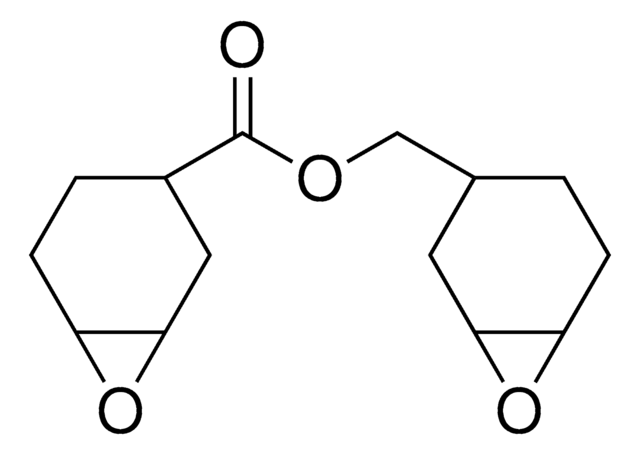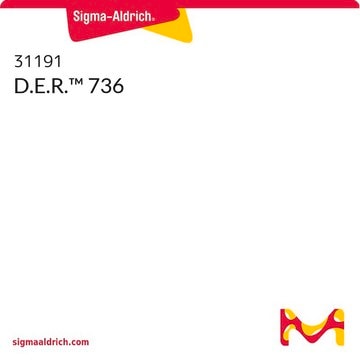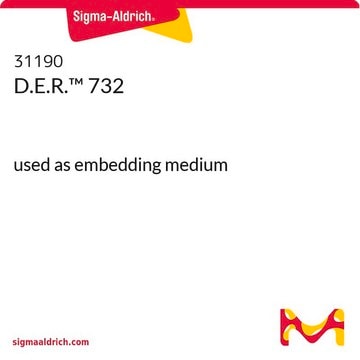D3415
Bisphenol A diglycidyl ether
viscous liquid, PPARγ inhibitor
Synonyme(s) :
BADGE, DGEBA, NSC 5022, 2,2-Bis[4-(glycidyloxy)phenyl]propane, 4,4′-Isopropylidenediphenol diglycidyl ether, D.E.R.™ 332
About This Item
Produits recommandés
product name
Bisphenol A diglycidyl ether,
Forme
viscous liquid
Composition
Epoxide equivalent weight, 172-176
Densité
1.16 g/mL at 25 °C (lit.)
Chaîne SMILES
CC(C)(c1ccc(OCC2CO2)cc1)c3ccc(OCC4CO4)cc3
InChI
1S/C21H24O4/c1-21(2,15-3-7-17(8-4-15)22-11-19-13-24-19)16-5-9-18(10-6-16)23-12-20-14-25-20/h3-10,19-20H,11-14H2,1-2H3
Clé InChI
LCFVJGUPQDGYKZ-UHFFFAOYSA-N
Vous recherchez des produits similaires ? Visite Guide de comparaison des produits
Description générale
Application
- to study its effects on propiomelanocortin (POMC):enhanced green fluorescent protein (EGFP) expression in our transgenic fish
- to study the curing behavior, kinetics of epoxy, polyamidoamine systems and the influence of the incorporation of Fe3O4 magnetic nanoparticles (MNPs)
- as a thermosetting resin
- to determine the optimum composition of the epoxy-polysiloxane blend
- for the preparation of transparent epoxy-based nanocomposite coatings
- for the preparation, coating and curing of epoxy-graphene (E/G)
Actions biochimiques/physiologiques
Caractéristiques et avantages
Liaison
Informations légales
Mention d'avertissement
Warning
Mentions de danger
Conseils de prudence
Classification des risques
Aquatic Chronic 2 - Eye Irrit. 2 - Skin Irrit. 2 - Skin Sens. 1
Code de la classe de stockage
10 - Combustible liquids
Classe de danger pour l'eau (WGK)
WGK 2
Point d'éclair (°F)
507.2 - 514.4 °F - closed cup
Point d'éclair (°C)
264 - 268 °C - closed cup
Équipement de protection individuelle
Eyeshields, Faceshields, Gloves, type ABEK (EN14387) respirator filter
Certificats d'analyse (COA)
Recherchez un Certificats d'analyse (COA) en saisissant le numéro de lot du produit. Les numéros de lot figurent sur l'étiquette du produit après les mots "Lot" ou "Batch".
Déjà en possession de ce produit ?
Retrouvez la documentation relative aux produits que vous avez récemment achetés dans la Bibliothèque de documents.
Les clients ont également consulté
Notre équipe de scientifiques dispose d'une expérience dans tous les secteurs de la recherche, notamment en sciences de la vie, science des matériaux, synthèse chimique, chromatographie, analyse et dans de nombreux autres domaines..
Contacter notre Service technique














